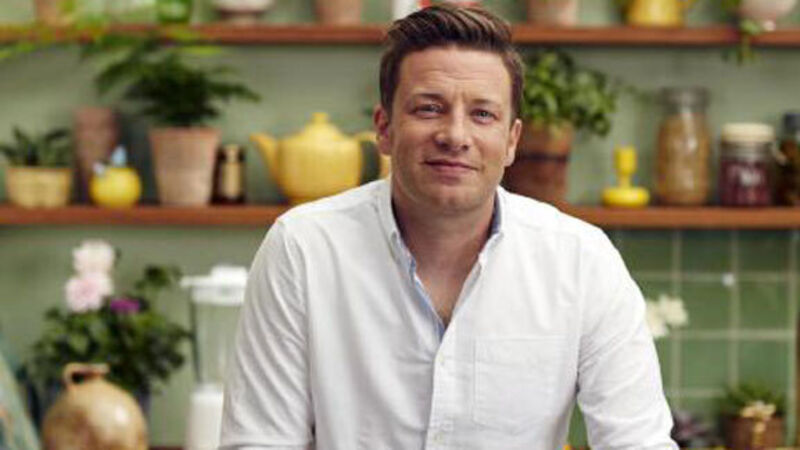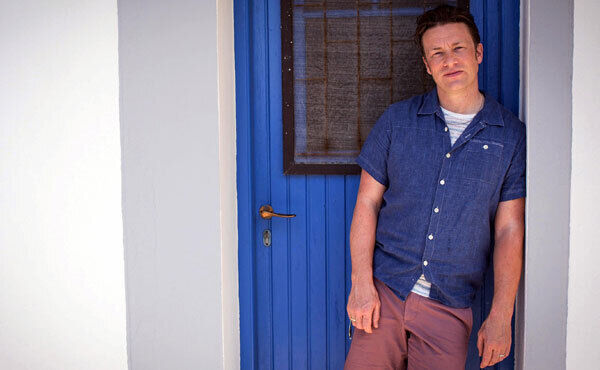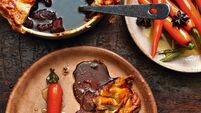Eat your way to a long life with Jamie Oliver’s new cookbook ’Everyday Super Food’

He’s living proof. The campaigning food guru looks the picture of youthful health.
He also looks super-fit — he shed two stone after introducing superfoods, such as sweet potatoes, nuts, seaweed, oily fish and eggs, into his diet.
Last year, as his 40th birthday loomed, he rediscovered what foods could make his ‘engine’ run as efficiently as possible.
It was a journey that brought him to the healthiest places on the planet — Costa Rica, Ikaria, in Greece, Okinawa, in Japan — where people regularly live to be 90 or 100.
He then spoke to experts in nutrition: doctors, scientists, professors; he even studied for a nutrition diploma. He was looking for food to “feed, fuel, fix and nourish” the body.

He introduced gradual changes to his diet and lifestyle. The result? A dramatic improvement in health and wellbeing.
He’s now intent on sharing what he learned, on TV (in the six-part series, Jamie’s Super Food, on Channel 4) and in a beautiful tie-in book that’s packed full of nutritional recipes.
So what did he learn?

The philosophy behind Everyday Super Food (published by Penguin, €30) is the “balanced plate” and appropriate portion control, a combination that ensures you get enough — but not too much — at each meal.
* Vegetables and fruit — one third of your plate.
* Starchy carbs (bread, rice, pasta, potatoes) — one third of your plate.
* Protein (meat, fish, eggs, beans) — one sixth of your plate.
* Dairy — one sixth of your plate
* Fat/sugar-high food: a small amount.

Oliver emphasises the importance of vegetables and fruit.
“You’ll notice I’m referring to veg and fruit, not fruit and veg.
Fruit is brilliantly nutritious and we should definitely embrace it, but veggies shouldn’t be thought of as second best,” he says.
On his travels, he found that the secret to longevity was lots of vegetables and fruit and, as importantly, a variety of each.
He recommends seven or eight portions a day, but warns that eating two portions of the same vegetable or fruit counts as just one of your five (or eight)-a-day.
The key is to vary what you eat to maximise nutrients, vitamins and minerals.
On carbs, he advises switching from white, simple carbohydrates to wholemeal.
And on protein he says you should aim, per week, for two portions of fish (one of them oily, such as salmon, trout or mackerel) and split the rest between meat-free sources, poultry and a little red meat.
But, as in all things, moderation is key. There have to be “naughty days and “treats”, says Oliver.
“Personally, I’m using this book Monday to Thursday/Friday, then hitting up comfort food at the weekend.”
70g pumpkin seeds,
20g puffed brown rice or puffed quinoa,
50g whole almonds,
80g Medjool dates,
half teaspoon ground turmeric,
half teaspoon ground cinnamon,
1 heaped teaspoon quality cocoa powder,
1 teaspoon vanilla extract,
half teaspoon manuka honey,
1 orange.
Blitz 40g of the pumpkin seeds into a fine dust in a food processor, then decant on to a plate.
Place the remaining pumpkin seeds, and the puffed rice or quinoa, in the processor, with the almonds and dates (de-stone first), then blitz, until finely chopped.
Add the ground turmeric, cinnamon, cocoa powder and a pinch of sea salt.
Blitz again, until finely ground, then add the vanilla, honey and half the orange juice.
Blitz for another one or two minutes, adding an extra squeeze of orange juice to bind, only if needed.
It takes a while for the mixture to come together, so be patient and let the processor work its magic.
With wet hands, divide into 24 and roll into balls, dropping them into the pumpkin seed dust as you go.
Enjoy two balls per snack. They’ll keep happily for up to two weeks in an airtight container.







